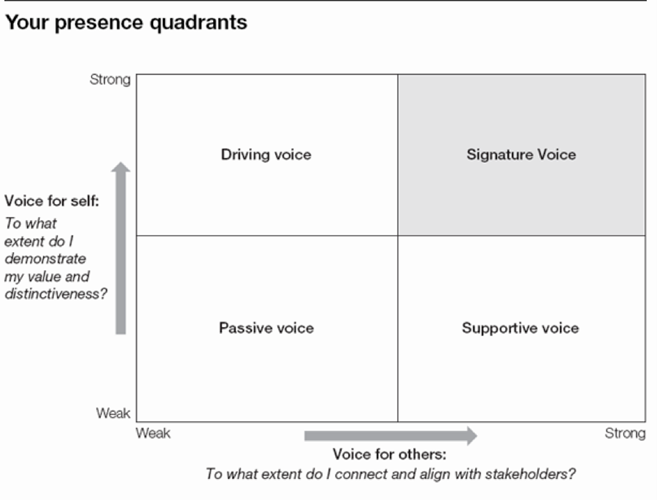When corporate board have gender diversity, businesses see better results. For example, a Canadian study of 6,000 boards found that gender-balanced boards have more varied viewpoints and lead to higher effectiveness and decreased financial irregularities. That’s why Women Get On Board’s mandate is to connect, promote and empower women to corporate boards.
I am pleased to announce that to further Women Get On Board’s mandate, I am launching a new blog series called Elevating Your Board Effectiveness. Building on my e-book “How to Get Yourself On a Board”, the Elevating Your Board Effectiveness series will provide practical insights, intelligence and tools to empower women with the skills and confidence to lead and serve on boards.
Today’s blog launches the first of the Elevating Board Effectiveness series and is about Finding Your Voice in the Boardroom. As I wrote in my 2018 blog called “Finding Your Voice at the Boardroom Table”, it can be difficult to find your voice when you are a new board member appointed to a board that has longstanding relationships or when you are the “token” woman at the table.
What’s the solution? I believe that in order to find your boardroom voice, women must embrace the 4 Ps:
- Purpose
- Presence
- Passion
- Power
- Purpose
Serving on a board is incredibly rewarding—and it’s one of the best ways to advance your career. Board service has personal and professional benefits, including opportunities to:
- Build your network and personal brand
- Give back to organizations with meaningful missions
- Learn different perspectives that can be applied to your existing roles
- Get sponsored for governance education programs (e.g., ICD.D, C.Dir or CDI.D)
- Develop governance leadership skills
- Get access to new knowledge, skills, perspectives, management styles, corporate cultures, business models, mentors, and connections
Your purpose is your reason for serving on the board. What is your motivation for serving on a board? Do you align with the organization’s mission? Do you have a higher purpose?
Another purpose that you bring to a board is your skills/expertise. This is where defining your board value proposition is exceptionally valuable. Your board value proposition is what you bring to the boardroom table and what your unique board offering is. You should be able to articulate your board value proposition in a 30-second-or-less elevator pitch. It should include specific expertise, skillsets the board currently lacks and how you are a leader in their industry (or a synergistic industry). Here is my elevator pitch that I have honed over the years:
“I have entrepreneurial, financial & governance expertise with high growth and transformational companies in technology, retail, consumer and cannabis sectors.”
Spend some time developing and road-testing your board value proposition. Ask yourself, does it convey your purpose?
- Passion
Your passion is the reason why you care about the board you’re serving. When you bring true passion to the board you are serving, it elevates your voice—and it’s contagious! Suddenly the whole board has higher enthusiasm and excitement for their work. One example of this in my board career was when I was interviewing for the National Ballet School Board. They asked me, “Why do you want to be a member of this team?” I said, “I’ve loved ballet ever since I was a little girl and I would love to bring value to the board with my combined financial and governance skills and passion.”
When it comes to elevating your board effectiveness and finding your voice in the boardroom, reflect on the reason why you chose to serve on the board. Remember that passion and bring it to the boardroom table.
Passion is why you show up and what you stand for. How can you distinguish board members who have passion from those who don’t? These articles from Great Boards and Bradford detail key qualities that describe amazing board members, including:
- Passionate, dedicated and committed
- Leadership, stewardship, and the ability to influence others
- Straightforward, impartial, and collegial
- Knowledgeable and an insatiable learner
- Discrete and values confidentiality
How many of the above qualities do you have? Are you demonstrating that you are a passionate board member?
- Presence
Your presence is how you demonstrate your purpose and passion to the other board members sitting at the table. I recently read a book called “Own the Room: Discover Your Signature Voice to Master Your Leadership Presence” by Amy Jen Su and Muriel Maignan Wilkins. Own the Room provides an amazing framework for finding your presence. Owning the room is the ability to fully capture that attention and engagement of a room by finding your signature voice.
What is your signature voice? The authors write that your signature voice is the perfect balance between “voice for self” and “voice for others” (see diagram below). Note that your signature voice cannot be too passive. As this article from DirectorPrep writes, “the best fit for the board is a candidate who will challenge the status quo, who possesses the willingness to ask difficult questions along with the skill of asking them in a respectful, non-threatening way.

Do you know which voice you need to develop to find your perfect balance? Try asking your friends and colleagues for actionable feedback so you can develop your signature voice and bring presence to the boardroom table.
Tip: Bring Presence by Standing Up for What You Believe In
My last piece of advice on presence is to stand up for what you believe in. This means forming a clear point of view—and most importantly—never feeling pressured into making a board decision you do not agree with. It’s important to remember that the board selected you based on your expertise/skills, strategic insight, and leadership track record. If something doesn’t feel right after hearing out your board colleagues around the table on a discussion, stand behind your instincts. There is no lesser way of demonstrating your value than by following someone you disagree with because of a willingness to stay quiet. Even if this means that you have to fall down and pick yourself back up, put yourself out there, make yourself visible and be fearless. The only way to be heard is to speak up.
- Power
Your power is how you affect meaningful change at the board level. It’s your belief in your ability to lead, influence decisions and lean in when you need to get things done. In my experience, there are three main stages for women stepping into their power:
- Leaning in
- Learning up
- Sponsoring others
- Leaning in
Many women have difficulty leaning into their power. How can we change this? It’s important to remember you aren’t alone. As Kamala Harris once said, “What I want young women and girls to know is: You are powerful and your voice matters. You’re going to walk into many rooms in your life and career where you may be the only one who looks like you. But you are not alone.” With this knowledge in mind, it’s important to step up and lean into your power.
As I wrote in my 2018 blog called “Finding Your Voice at the Boardroom Table”, the concept of leaning in means to be assertive and to move toward a leadership role rather than a follower’s role. Imagine a round table discussion, the most active participants are the ones physically leaning forward into the table and the discussion, while those who are willing to take a back-seat approach are usually in a more passive, distanced position.
How does one lean in at the boardroom table? Start by taking a leadership role on a particular topic, issue or governance process on which you have specialized expertise. For instance, I have been asked to “lean in” on certain due diligence processes as part of an M&A transaction. Also, you might “lean in” as the Chair of the Nominating & Compensation Committee, where you have the opportunity to lead the process to provide an Executive & Directors Compensation review. Another example is leading a board renewal process to advance gender diversity in the boardroom.
Most importantly, remember, the roles on which you “lean in” on may relate to your specific board committee, but can also take place outside of the boardroom, so make sure to seize these opportunities.
- Learning up
Knowledge is power and power is knowledge. The fastest way to enhance and amplify your own power in the boardroom is through a process of continuous learning. In my article called “Top 10 Tips to Help You in Your Journey to a Corporate Board”, I detail how you can invest in your ongoing professional development.
The key to embracing continuous learning is to recognize that to excel as professionals, we have to go above and beyond existing requirements. That means devoting yourself to mastering a skill. Note that this will not be an easy journey. Anders Ericsson is the world’s expert on experts and he discovered it takes 10,000 of deliberate practice to become world class in a field. Deliberate practice means learning about a new skill/area, practicing in the real world, and seeking feedback from your mentors — over and over and over again. You can learn more by reading Ericsson’s book, “Peak: Secrets from the New Science of Expertise” or Malcolm Gladwell’s “Outliers”.
I apply this model of learning to elevate my board effectiveness on an ongoing basis. For example, when I began serving on corporate boards in the cannabis industry, I soaked up as much knowledge as a I could by subscribing to newsletters and attending events/conferences. Then I honed my knowledge at industry roundtables and sought feedback from my colleagues. For example, I recently participated on a virtual event for the Cannabis Industry hosted by MNP LLP on ”ESG-A journey to Strategic Advantage “-here is a link to the whitepaper: https://www.mnp.ca/en/posts/cannabis-2-0-the-link-between-socially-conscious-business-profiles-and-success?mc_cid=b1fd927f17&mc_eid=9057177328
- Sponsoring others
Once you have a seat at the boardroom table, you can work to enhance and amplify other women’s’ power. For example, you can highlight other women’s work and ideas, even when they aren’t in the room. This Harvard Business Review article called, “A Lack of Sponsorship Is Keeping Women from Advancing into Leadership”, “a sponsor is a person who has power and will use it for you. . . Having an executive-level sponsor can be make or break for a high-potential woman’s career, particularly when it comes to getting important roles that are stepping-stones to the top.” Sponsoring others, especially those who are women or Black, Indigenous, or People of Colour (BIPOC), has the power to affect meaningful change at the board level and beyond.
In my 2015 blog “The Power of Sponsoring”, I detailed how I myself have benefited from sponsorship over my career. I am grateful for all my wonderful sponsors who have believed in me, helped me to make great connections and who provided me with guidance and critical feedback. My sponsors have been women and men whose trust I gained while working alongside of them on boards, consulting, as a Chief Financial Officer and in my community.
When looking for a sponsor, remember it is a two-way relationship based on mutual respect and trust. You both need to be invested. Your sponsor is putting their name on the line by championing you, so you need to follow through with their advice and work hard to keep your sponsor’s good reputation intact.
Sponsoring is about giving back by paying it forward for others. Don’t be afraid to ask for a sponsor or take action as a sponsor for someone else. In fact, I have recently been sponsored onto a new board by someone I have worked closely with on another board and they talked about me when I was not there. It is very powerful to have sponsors championing you!
Finding your voice in the boardroom can be difficult. However, by embracing the 4 Ps of purpose, passion, presence, and power, you will be able to lead with courage and serve with confidence on corporate boards.


